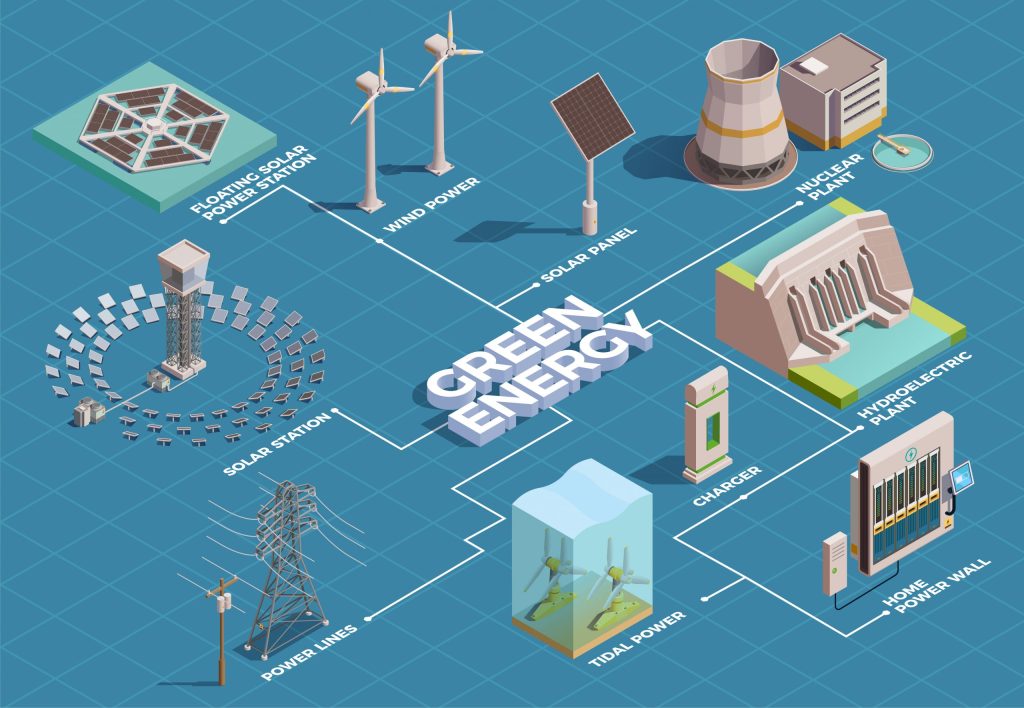In the age of environmental awareness and growing concerns about the planet’s health, the vital significance of technology in tackling climate change cannot be overstated. Technological advancements have emerged as formidable allies in the battle against the ever-looming threat of climate change.
Harnessing Renewable Energy Sources for a Sustainable Future
One of the cornerstones of climate change mitigation revolves around transitioning from fossil fuels to renewable energy sources. Solar, wind, hydroelectric, and geothermal energy lead the charge towards a cleaner and more sustainable future. Solar panels glistening atop rooftops and massive wind turbines gracefully harnessing wind power are becoming increasingly common sights.
Smart Grids: Revolutionizing Energy Distribution
Smart grids are playing a pivotal role in the energy revolution. These intelligent networks enable efficient two-way communication between consumers and energy providers. Smart grids minimize wastage and reduce the carbon footprint by optimizing energy distribution and consumption patterns.
The Growing Influence of Electric Vehicles
Transportation is a significant contributor to greenhouse gas emissions. Electric vehicles (EVs) are swiftly reshaping the automotive industry by offering eco-friendly alternatives to traditional gasoline-powered cars. With advancements in battery technology, EVs boast longer ranges and shorter charging times, making them increasingly practical for everyday use.
Precision Agriculture: Feeding the World Sustainably
Agriculture is another sector that technology is revolutionizing. Precision agriculture utilizes sensors, data analytics, and automation to optimize crop yield while minimizing resource usage. This not only ensures food security but also reduces deforestation and land degradation.
Carbon Capture and Storage: Mitigating Industrial Emissions
Industries have long been associated with high carbon emissions. Carbon capture and storage (CCS) technologies offer a glimmer of hope by capturing CO2 emissions at their source and storing them underground. This prevents a substantial amount of greenhouse gases from entering the atmosphere.

Transitioning Towards Circular Economies
The concept of a circular economy is gaining momentum. Instead of the traditional linear take-make-dispose model, a circular economy promotes recycling, reusing, and repurposing materials. This reduces waste, conserves precious resources, and reduces the strain on the environment.
Space Tech: Monitoring and Understanding Climate Change
Advancements in satellite technology provide us with a bird’s-eye view of the Earth’s changing climate. Satellites equipped with various sensors help monitor deforestation, ice melt, sea level rise, and other critical indicators of climate change. This data is invaluable for making informed decisions and implementing effective mitigation strategies.
Conclusion: Technology as a Catalyst for Change
In a world grappling with the consequences of climate change, technology emerges as a powerful catalyst for positive transformation. From renewable energy to innovative agricultural practices and space-based monitoring, technological solutions offer hope for a more sustainable future. By harnessing the potential of technology and fostering global collaboration, we can pave the way towards a planet that thrives in harmony with nature. As we embrace these advancements, we take a step closer to ensuring a safer and healthier world for generations to come.




